
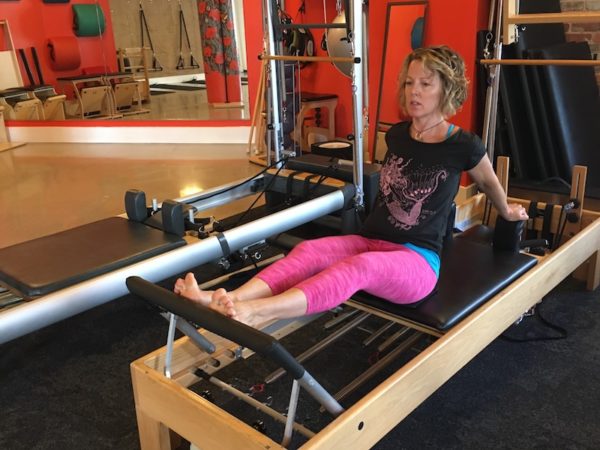
Jen Micoleau was never much into team sports, which she felt put her at a disadvantage when it came to finding a good way to exercise and keep fit. And then she discovered Pilates. “In 1997 I was living in D.C. and was at the gym where I had a membership and there was a woman there who was teaching mat Pilates,” she told me. “It was very individual, personal and something I could do myself. It was also something I didn’t need equipment for.”
A few years later, Jen took a Pilates class in Maine and was introduced to equipment with names like the Reformer and the Cadillac and the Wunda Chair. She has since mastered them all and now teaches other people how to use them at Springboard Pilates, in Portland.
Pilates is a fitness method that was developed during World War I by German boxer, gymnast, fitness trainer and circus performer Joseph Pilates. When the war broke out, he was living in England and because he was German, ended up in an internment camp.
During that time, he taught an exercise routine to fellow prisoners and eventually, sick and injured soldiers. The exercises were designed to stretch, strengthen and stabilize important muscles. For soldiers who were bedridden, he took apart beds and used the springs as a form of resistance. Because they were supported by the springs, they could still move their arms and legs. They could also still focus on their breathing, circulating the blood through their body and on their core strength.
Pilates called his method Controlology but it later became known as Pilates. You can read about his method in his 1945 book Pilates’ Return to Life Through Contrology.
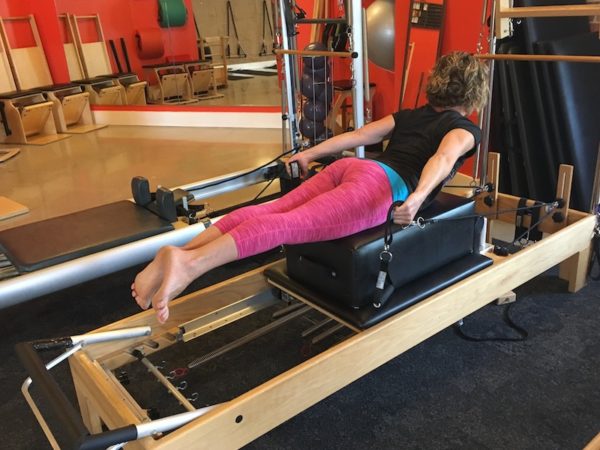
The contraptions he designed were the forerunners to the equipment you’ll find at Springboard and other classical Pilates studios. “Here in a classical studio, we typically start somebody on the Reformer because it is the most supportive piece of equipment,” Jen explained. “We get them to feel how their limbs are connected to their core.
“Then we might move them onto the Cadillac. They’re similar exercises but just done in a different way. And then we might take them over to the chair, again doing a similar exercise but now with less help. They have to use more of their own strength. Then they would come over to the mat and do all the same stuff but without any support. So they’ve got only their own body strength, just their own mind-body connection.”
All of the pieces of equipment use resistance in the form of various weighted springs. The goal is to both challenge and align the body. The movements help improve posture and breathing and build muscle strength throughout the entire body. While many people may be more familiar with Pilates mat work, within the system of exercises that Jen outlined, mat work is considered the most difficult.
In addition to her knowledge of and experience with Pilates, Jen also brings something else to her classes. She is an artist with a special interest in figurative drawing and sculpture. Doing and teaching Pilates (and also traditional yoga) has given her a better understanding of anatomy and a deeper connection with her own body. It also made her want to be a better sculptor. “I could feel in my own body what was happening and how movement worked,” she said. “I thought if I learned how to sort of sculpt my own body, it would translate.
She decided to go back to school and study graphic design, which helped her as an artist and as a Pilates instructor. “I learned composition and line and how to see a whole image yet be able to break it down into parts. That’s what the body is like. I love organizing my body in space and helping people figure out where they are in space. For me as a teacher, understanding line, asymmetry and symmetry and balance is a huge help.”
Whether she’s working with a student, creating a sculpture or drawing the human form, she’s always trying to figure out what is happening inside the body. “You have to be able to see where any imbalance is coming from — is it the foot? The knee? The hip? You have to really pay attention to nuanced movements.”
We all have habitual movement patterns that we don’t notice. As a teacher, it’s her role to point them out, make you understand and feel what’s happening and help you figure out how to change your movement.
As an artist, she’s been amazed at how her work has evolved. It became especially clear after she took a recent figure drawing class. “These are 1, 2 or 5-minute poses,” she explained, “and capture pretty much what I do every day in a Pilates lesson: Help organize a body in space and identify a body’s needs by the time footwork is done. I love these kinds of parallels in life.”
Doing and teaching Pilates has brought Jen good health and great joy. Exactly what she wishes for her students. “When you leave a class,” she said, “I want you to feel like you can breathe better. You’re going to feel like you can stand tall and feel a little bit more alive. Your eyes are brighter and you’re more clear-headed. That’s what I want you to walk away with.”
Springboard Pilates, which is owned by Meredith Coffin, offers a variety of classes and instructors. You’ll find more information on the Springboard Pilates website. For more information about Jen and her art, check out her website Well Being Basics. And check out the short video of Jen demonstrating some Pilates movements on the Reformer.

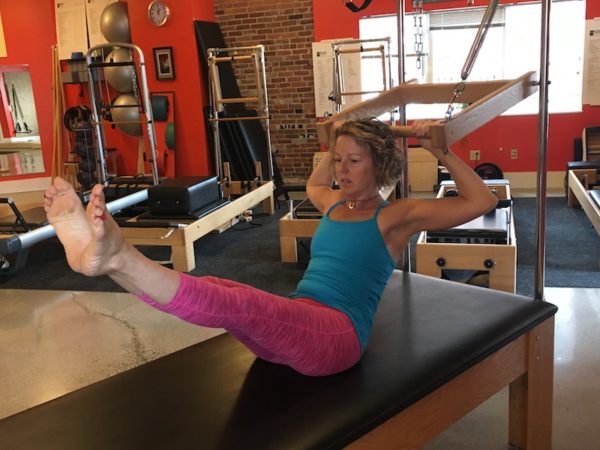
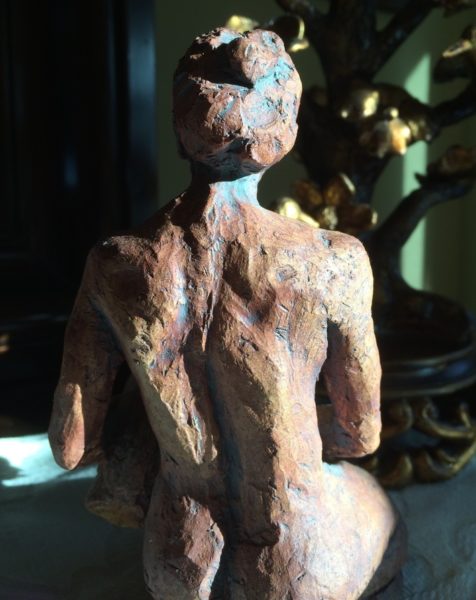
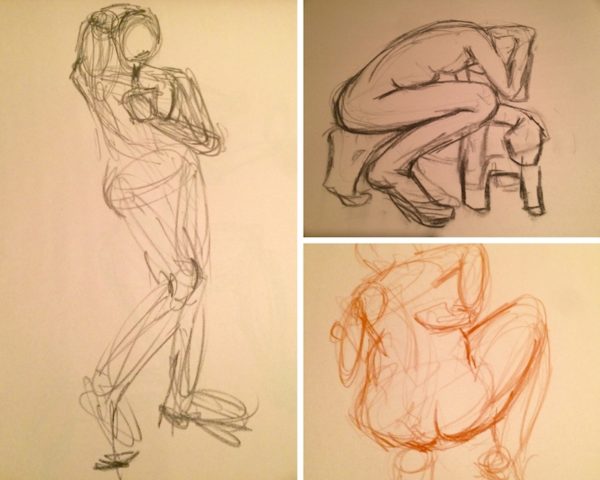
Leave A Comment